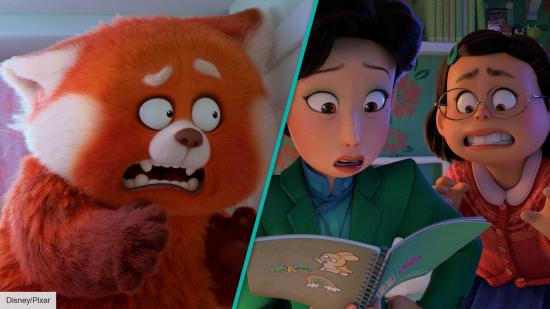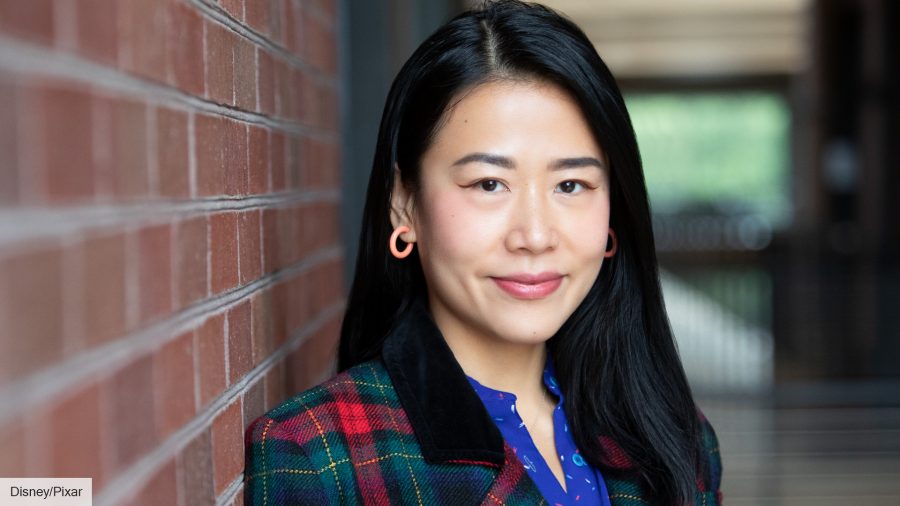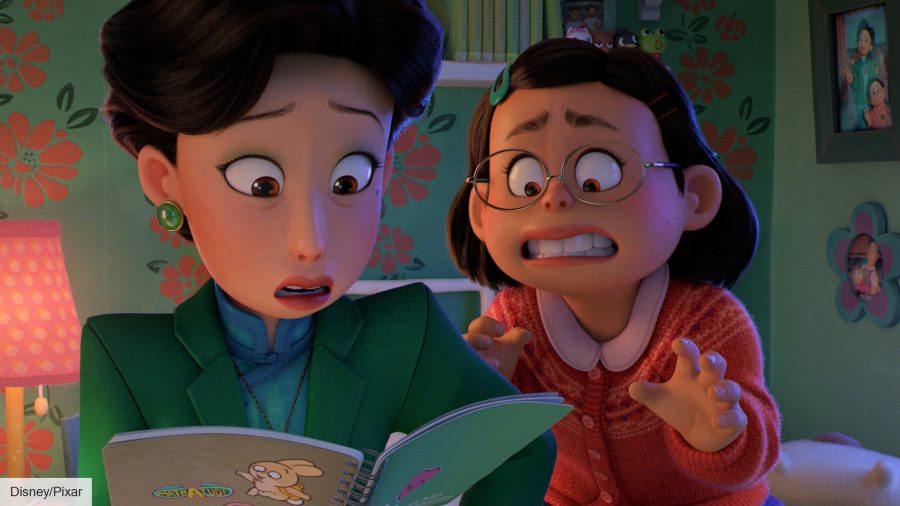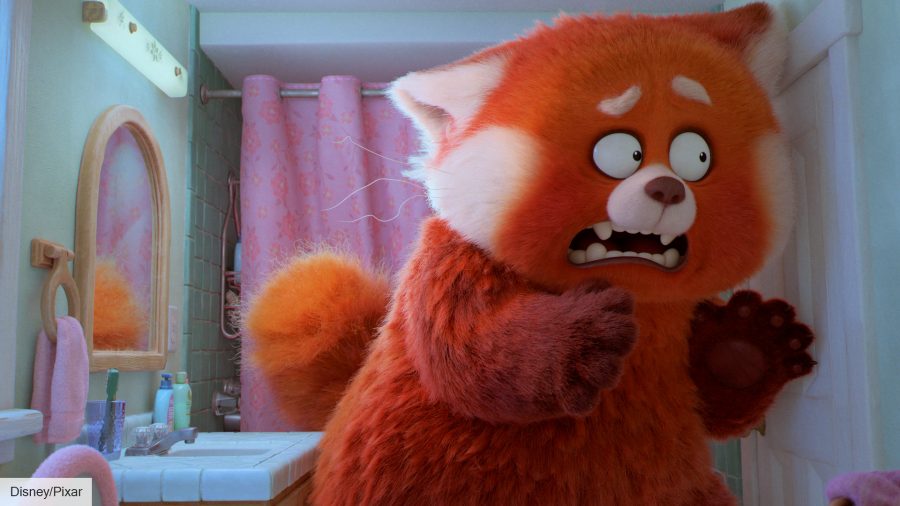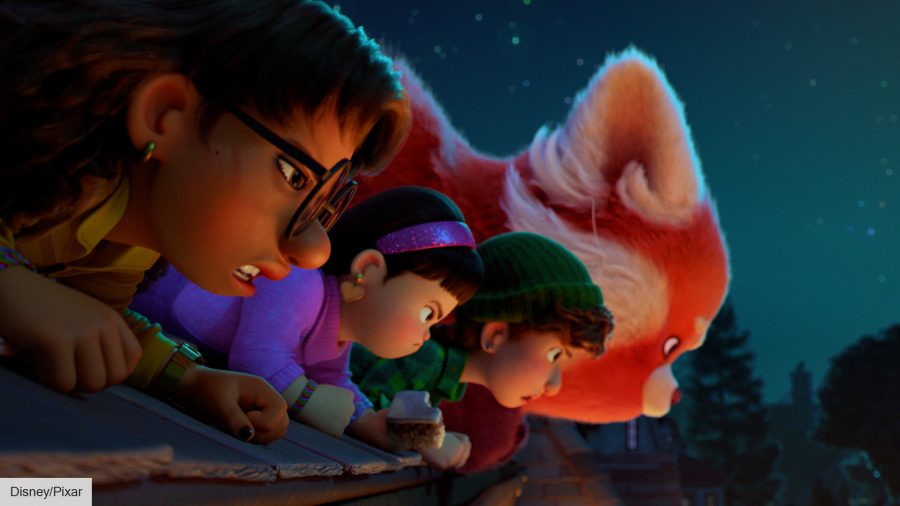Turning Red is a film of firsts. It’s the first Pixar movie to be directed solely by a woman, the first to feature a contemporary teen girl as its main character, and the first time that one of the esteemed studio’s animated movies has been led by an all-female production team.
It’s perhaps unsurprising then that when director Domee Shi first pitched Turning Red to Pixar, she said she wanted it to feel different to any other film in the studio’s history. This would be a lofty goal for even the most experienced of filmmakers, but for a first-time feature director, surely it would be impossible? Well, clearly, no one told Shi that because we’ve seen the first thirty minutes of Turning Red, and it’s safe to say she was incredibly successful.
Turning Red doesn’t resemble any Pixar movie we’ve seen before. There’s an anarchic quality to the film, a zaniness, and an unrestrained spirit of fun that separates it from its more sombre predecessors. It’s refreshing to watch. Yet, despite its unique qualities, it also clearly has the heart and tenderness we’ve come to expect from the very best of Pixar.
Turning Red tells the story of Meilin ‘Mei’ Lee (Rosalie Chiang), a teenage girl growing up in Toronto, who thinks she’s got life figured out. Mei’s got a great group of friends, she’s got more A’s than The Fonz, and knows exactly who she is.
There’s just one problem, her mother, Ming Lee (Sandra Oh), is ever so slightly controlling and expects Mei to be the perfect daughter at all times. Still, Mei’s got a strict policy of church and state when it comes to her family life and school days, so surely nothing will ever go wrong.
Magical transformation: Best fantasy movies
Oh, wait, no. It goes spectacularly wrong, and when Ming publicly embarrasses her daughter, it sparks a very strange transformation in Mei. It’s not puberty, although there are definitely similarities. No, Mei starts turning into a giant red panda when stressed.
It’s a strange idea, we know, but it comes from a very personal place. At a press conference attended by The Digital Fix, Shi explained that Turning Red’s genesis began while she was working on her award-winning short Bao, where people kept asking her why the main character was a boy and not a girl.

“I was like, ‘because I only had eight minutes to tell this story, for a mother and daughter story, I’d need an entire feature film to unpack that’,” Shi laughed. “Luckily, I was soon given the opportunity to do a lot of unpacking when Pixar asked me to pitch some ideas for a feature film.”
All of the ideas that Shi pitched were coming-of-age teen girl stories; however, it was Turning Red and the passion Shi showed for the project that caught the attention of Pete Docter, Chief creative officer of Pixar.
“Turning Red, this one, was the most personal to me, and I think that’s why Pete and the creative leadership at Pixar ultimately picked it,” Shi explained. It was real, it was weird, and very specific. I think, at the end of the day, that’s what draws people to these ideas and stories.”
While Shi has never turned into a giant red panda (that we know of), she’s very open about the film being inspired by her own life. “It was inspired by my own relationship with my mother,” Shi said, admitting that she drew on her own life experience to inform the character of Mei. Like Mei, she lived in Toronto and was close to her mother.
Magic Kingdom: Best Disney movies
As she started to get older, though, she began to find her own interests and social circles, slowly pulling away from her mother, who didn’t understand Shi’s growing interest in anime series and comics. “She didn’t understand why I was obsessed with these fictional characters with huge eyes and colourful spiky hair,” Shi joked. She definitely didn’t understand whatever this was. Basically, I was being pulled in one direction, but my duty and loyalty to my parents and my mom was pulling me in another direction.”
It was this “universal struggle” between working out who you are while trying to honour your parents that inspired Shi to make Turning Red, with the magical transformation into a giant red panda standing as a metaphor for the trials and tribulations of puberty.
“We want to use the red panda in this movie as an adorable metaphor for the scary, unadorable, awkward, and cringe-worthy changes we go through during this age,” Shi said. “More specifically, we want to explore the nuances of Asian parent-child relationships and dealing with change, and all of the intergenerational conflict and how it shapes who we become”.
Ultimately as surreal as Turning Red is, it’s a film about accepting that change is inevitable. Or, as Shi puts it, “at its core [Turning Red is about] a mother and daughter finally embracing change and all of its messy ephemera, even if it means saying goodbye to the relationship they once had.”
Awkward: Best teen movies
Still, Shi was determined to bring all the quirkiness of a tween growing up in the late ’90s and early aughts to Turning Red. As such, her producer Lindsey Collins asked the team working on the movie to embrace the dorky teenager they once were.
“We all had to learn how to embrace the awkward and awesome 13-year-old versions of ourselves,” Collins joked, saying this creative process “inspired something unique” in the team working on the movie. Collins described it as an “indescribable spirit of pride and excitement and fun” that she hopes shines through the movie.
Like Shi, Collins was keen for Turning Red to have a unique quality, but that extended beyond the characters and world they were building. It meant making creative decisions that Pixar had never made before. Danielle Feinberg, the visual effects supervisor who worked on Turning Red, described pinning down Turning Red’s “look” – the marrying of comic book and anime influences that had inspired the film with Pixar’s visual language – as one of the biggest challenges of making the film.
“How could we take that inspiration and marry it with our typically very complex, detailed, three-dimensional world?” She said. “It wasn’t like we wanted to use our 3D computer graphics tools to make an anime film. That would be like using oil paints, or something, to try and make a watercolour painting, which would just be kind of silly.”
East meets west: Best anime movies
Patty Kihm, an animation supervisor on Turning Red, described it best when she called it “East meets West”. She said: “We wanted to tap into Domee’s passion for the two genres of animation that she loves, anime being the East and Pixar Disney animation being the West,” she continued. “Turning Red lives somewhere in between these styles. We took influences from both genres and merged them together.”
It’s that merging of genres that probably best describes Turning Red. Admittedly we’ve only seen the first half an hour of Turning Red, but it feels different from traditional Pixar movies, yet still somehow familiar. There’s been talk recently that other animation studios have taken the shine off Pixar’s recent output.
Movies like the Sony Animation family movie The Mitchells versus The Machines and even Ron’s Gone Wrong felt like they were pushing the boundaries of what a big-budget animation could achieve. They had more in common with modern cartoons like Adventure Time, The Adventures of Flapjack, and Regular Show, blending contemporary and adult references with a beguiling childishness.
Films like Luca and Soul were beautiful, but they felt monumental and part of the establishment, dare I even say old-fashioned. You can’t say that of Turning Red; there’s a rebelliousness to the picture that makes it exciting to watch (and we really can’t wait to see it in full). Here’s hoping it hails a new era of excellent animation from Pixar.
Turning Red hits Disney Plus on March 11.
